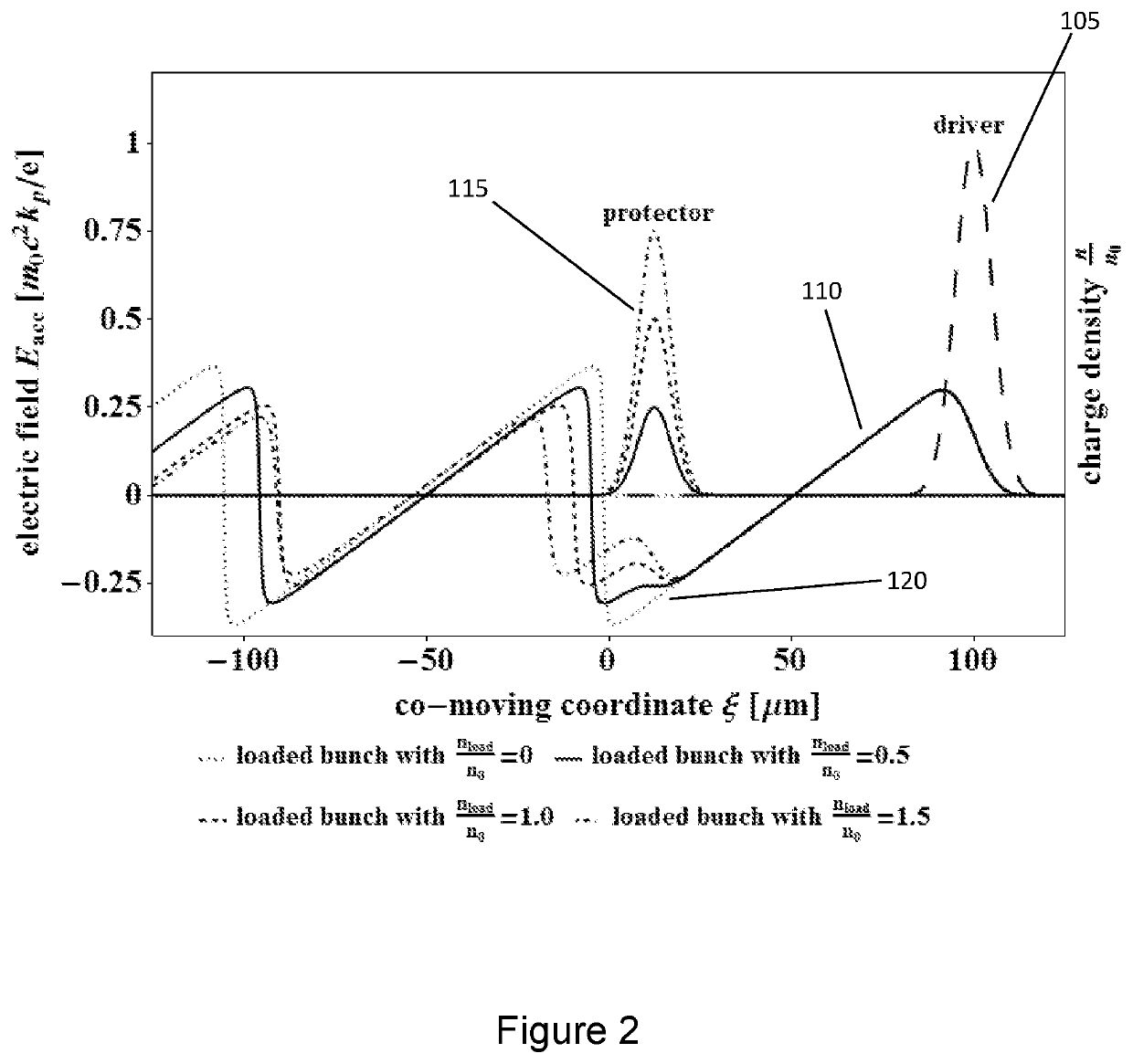Plasma accelerator
a plasma accelerator and charged particle technology, applied in the direction of excitation process/apparatus, laser details, electrical apparatus, etc., can solve the problems of deteriorating the beam emittance, accelerating charged particles that have accumulated correlated energy, and not uniform acceleration of charged particles
- Summary
- Abstract
- Description
- Claims
- Application Information
AI Technical Summary
Benefits of technology
Problems solved by technology
Method used
Image
Examples
Embodiment Construction
[0075]Throughout the following description, identical reference numerals will be used to identify identical parts.
[0076]Embodiments of the present invention relate to plasma-based accelerators. Plasma based accelerators can provide very high energy gains and can allow an increase of electron 5D-brightness by orders of magnitude. A plasma accelerator suitable for use with the present invention is shown in FIG. 1a. The accelerator 5 comprises a chamber 10 for containing the plasma. A medium from which the plasma is formed is present in the chamber 10. A plasma generator 7, such as a heater or an electromagnetic field generator, creates and maintains the plasma in the chamber 10. The accelerator 5 comprises one or more plasma drivers 15, such as lasers, electron beam generators, proton beam generators or the like. The plasma drivers 15 are operable to provide an excitation beam 20 along a beam axis 22 through the medium in the chamber 10, thereby forming a plasma wave within the plasma...
PUM
 Login to View More
Login to View More Abstract
Description
Claims
Application Information
 Login to View More
Login to View More - R&D
- Intellectual Property
- Life Sciences
- Materials
- Tech Scout
- Unparalleled Data Quality
- Higher Quality Content
- 60% Fewer Hallucinations
Browse by: Latest US Patents, China's latest patents, Technical Efficacy Thesaurus, Application Domain, Technology Topic, Popular Technical Reports.
© 2025 PatSnap. All rights reserved.Legal|Privacy policy|Modern Slavery Act Transparency Statement|Sitemap|About US| Contact US: help@patsnap.com



